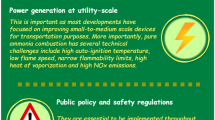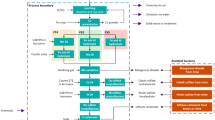Abstract
Recent studies have shown that the combination of a NOx storage reduction catalyst (NSR) and a passive selective catalytic reduction catalyst (pSCR) would be a technical solution to meet post EU6 emission legislation for small passenger cars. In this case, NH3 formed during rich NSR regeneration is used to reduce remaining NOx on a SCR catalyst which is located downstream of the NSR. In this study, first, the NH3 formation mechanism of NSR under different emission λs, rich durations, and stored NOx values are clarified using a diesel engine operating under steady-state operation. Finally, NOx conversion and the associated fuel consumption penalty are clarified under the Worldwide harmonized light vehicle test cycle (WLTC). It was identified that NH3 starts to be produced by the NSR after oxygen storage capacity depletion. Next, a NH3 peak occurs as a result of the converted pre-stored and engine out NOx. If the rich operation is long enough, the pre-stored NOx contribution fades and NH3 concentration lowers to an equivalent level as the engine out NOx. From this understanding, several WLTC patterns were measured varying the number of rich operations and their duration in order to identify best regeneration strategy with a minimum fuel consumption penalty. The optimal pSCR benefit, in terms of fuel penalty, is achieved when the rich operation duration is (1) longer than the breakthrough time, (2) includes the initial NH3 peak resulting from the conversion of the pre-stored NOx.










Similar content being viewed by others
References
Can F et al (2012) An overview of the production and use of NH3 in NSR + SCR coupled system for NOx reduction from lean exhaust gas. Catal Today 197:144
Chatterjee D et al (2010) Modelling of a combined NOx storage and NH3-SCR catalytic system for diesel exhaust gas aftertreatment. Catal Today 151:395
Kouakou A et al New insight in NH3 formation during the purge of a lean NOx Trap in vehicles running conditions. SAE 2009-01-2710
Hackenberg S et al Ammonia on a LNT: avoid the formation or take advantage of it. SAE international, 2007-01-1239
Acknowledgments
The authors would like to thank Mr. T. Nastos (Exothermia S. A.) and Ms. R. Tokunaga (Toyota Motor Corporation) for their strong support during the execution of this study.
Author information
Authors and Affiliations
Corresponding author
Rights and permissions
About this article
Cite this article
Storms, W., Rateau, A., Matsubara, H. et al. Clarification of NH3 Formation Mechanism on a Diesel Engine NOx Storage Reduction Catalyst Under Rich Conditions and Evaluation of the SCR Benefit at WLTC. Top Catal 59, 925–930 (2016). https://doi.org/10.1007/s11244-016-0570-6
Published:
Issue Date:
DOI: https://doi.org/10.1007/s11244-016-0570-6




